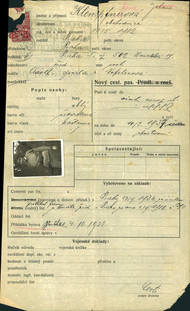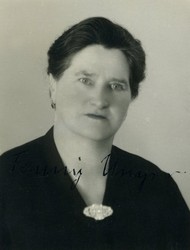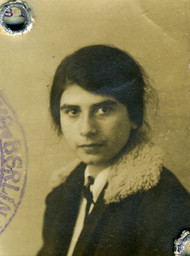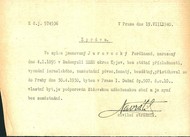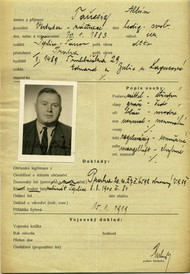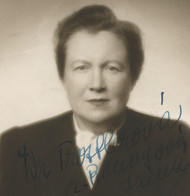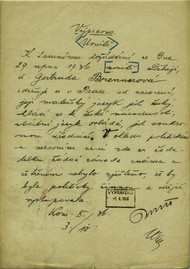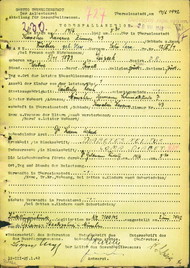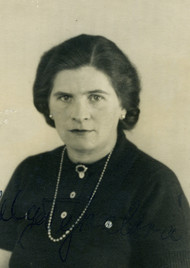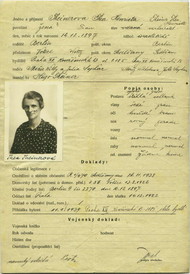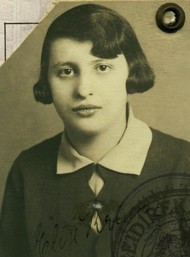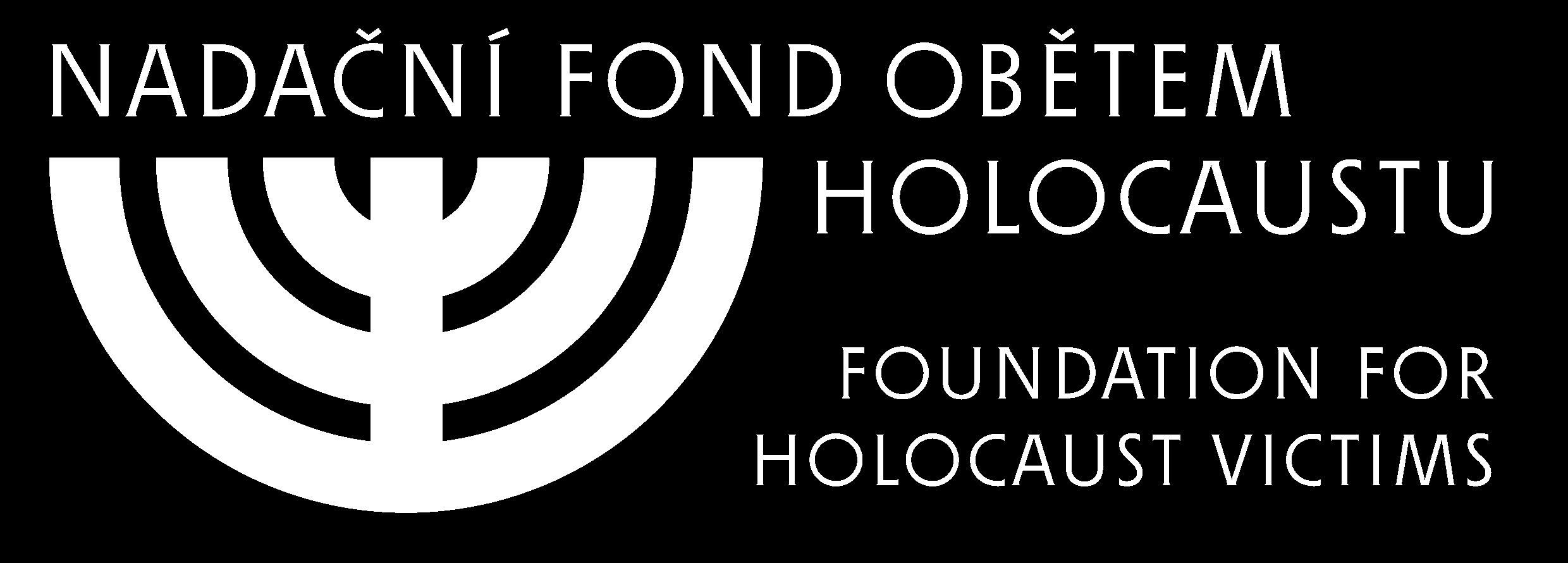In these days we commemorate an event that went down in the history of the Holocaust as the “makeover” of the Theresienstadt ghetto. On this occasion, we first and foremost commemorate the inmates of the Theresienstadt ghetto, who weren’t just injustly imprisoned but murdered by hunger, unbearable living conditions, executions and deportations to the gas chambers of Auschwitz and other extermination camps and also abused for an absurd spectacle: in order to cover up the real conditions in the so-called “Theresienstadt ghetto”, they had to play the role of content and happy inhabitants of a little province town.
Next to this, this event helps us realize the power of proganda and the systematic spreading of half-truths and lies and how these lies and half-truths step by step gather acceptance among the population. The filmmaker Martina Malinová documents the course of the visit of the International Red Cross commission by means of interviewing Doris Grozdanovičová, former inmate of Theresienstadt and eye-witness to the IRC’s visit and David Haas, grandson of one of the most famous painters imprisoned in Theresienstadt, Bedřich Fritta, whose pictures unmask uncompromisingly the cynicism and contempt for mankind of the Nazi regime.
The makeover
The rising international concern about the situation of the Jews in the Third Reich is proven by a request made by the International Red Cross in the beginning of 1943 for a visit of one of the National Socialist concentration camps. The Nazis chose for Theresienstadt as a suitable place to show. Preparations for the visit started in the spring of 1943 and were finished a few weeks before the visit took place. Part of the makeover Theresienstadt went through was the renaming of the “ghetto” into “Jewish settlement”, the founding of a bank run by the Jewish council, including special bank notes, which technically weren’t anything else but worthless pieces of paper. Shops were opened, offering the things that had been confiscated from the inmates when they arrived in Theresienstadt. Suddenly, there was a children’s playground and a coffee house. Inmates who had been imprisoned for longer and whose bodies showed traces of this imprisonment were deported to the gas chambers of Auschwitz, in order to show off only the good looking, still strong and healthy inmates. The streets were cleaned and decorated, as well as several flats, solely for the purpose of deceiving the IRC.
 Bedřich Fritta: Coffee house (1943/1944) (Source: private archive of the Haas-family)
Bedřich Fritta: Coffee house (1943/1944) (Source: private archive of the Haas-family)
The visit
The IRC’s commission visited Theresienstadt on Friday, June 23rd, 1944 from approx. 12 to 4 p.m. The ten delegates were accompanied by the camps commander and the chairman of the „Jewish council“ and led a beforehand prepared path through the city. During the visit, they were shown a carefully rehearsed play with hand-picked inmates and an extravagantly designed scenery.
From a report of the event by the former inmate S. van den Bergh: My wife and me were chosen and moved into a freshly painted
room in the Hamburg baracks. (…) The night before the visit, we witnessed a real tragicomedy. At 10 pm, we went to sleep.
Just when we were falling asleep, there was a knock at the door and in front of us stood an angry man with a table and chairs.
We could barely make him understand that our room was pretty enough and that he should go to hell with his table and chairs.
The only thing we wanted was sleep. One and a half hours later another man came in, this time without even knocking at the
door, with him he had a ladder. My wife was shocked when he put up the ladder above her bed to put up curtains. Before 5 o’clock
in the morning an elegant lady came to bring a carpet and a tablecloths, at half past five a gardener who placed a pot of
flowers in the window and some more freshly cut flowers in a vase on the table.
1
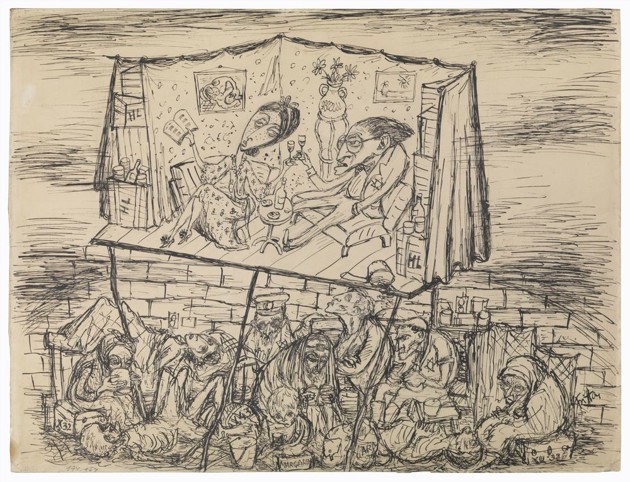 Bedřich Fritta; The room/Pokoj (1944) (Source: private archive of the Haas-family)
Bedřich Fritta; The room/Pokoj (1944) (Source: private archive of the Haas-family)
The report
Dr. Maurice Rossel, the leader of the IRC commission, wrote a short report dividing the living conditions in Theresienstadt into several subchapters: population, administration, housing, food, garments, work, etc. He describes exactly what he had been shown by the SS. Excerpts from his report read as follows:
-
Housing: sufficient bed linen, changed on a regular base, blankets of outstanding quality.
-
Food: It is possible to convince oneself everywhere of the sufficient nutritional status of the population. See photos, especially the children.
-
Garments: The people we met wore all kinds of different garments, just as one would expect in a little town, some well-off, others rather simple. Elegant women wear silk stockings, hats, scarves and modern purses.
-
Equipment of the medical stations: The equipment with medical instruments is in all respects satisfactory. There are only few places where the population enjoys a medical care comparable to Theresienstadt.
Commentary on the whole report by Vojtech Blodig, PhD.
The greatest lie Rossel quotes in his report was that Theresienstadt was a „final camp“ and usually nobody was deported anywhere else, once they got here. As a matter of fact the inmates of Theresienstadt, men, women and children were being deported throughout the whole period of the camp’s existence deported further to the extermination camps in Auschwitz-Birkenau, Treblinka and Sobibor. Before and during the makeover of Theresienstadt thousands of people were deported to be murdered.
In 1979, the author and director of Shoa, Claude Lanzmann, led an interview with M. Rossel. From this interview it is possible
to tell that the doctor, who was 27 years old in 1944, himself was prejudiced against Jews. He said: This camp gave the impression,
that the Israelites sent here people who were especially rich or had been important in their towns so that they couldn’t
vanish just like that…
.2 He accused the inmates he met during his visit of not signalling anything to him: One would cry
out or lament. (…) Someone, who as an official visits different camps for months, always meets someone there who blinks
his ee and trys to point towards something. That was common. But here, nothing, absolutel nothing. There was such obedience
and passivity, that it was unbearable for me.
3
The testimony of inmates though confirm the disappointment about the delegates accepting the camouflage and believing in it.
There was no one in the ghetto who would have had any doubts that the most important imperative of the commission would be
mistrust towards the SS. Without exception, we were convinced that anyone of sound understanding would recognize the obvious.
4
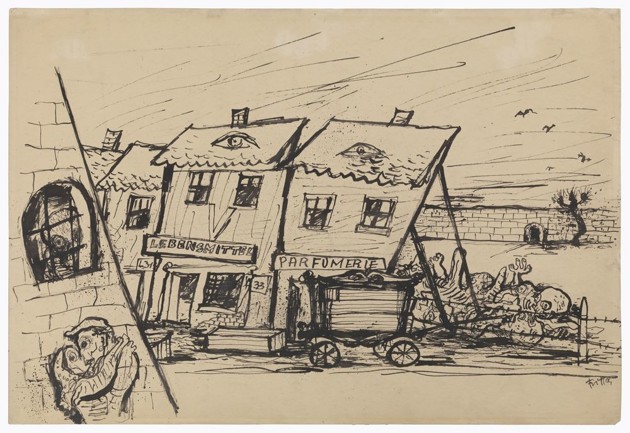 Bedřich Fritta: Shops in Theresienstadt (1944) (Source: private archive of the Haas-family)
Bedřich Fritta: Shops in Theresienstadt (1944) (Source: private archive of the Haas-family)
The Nazis made use of the prepared scenery also for further propaganda efforts about Theresienstadt, where live supposedly
was great. Just a few weeks after the visit of the IRC, in August and September 1944, a movie with the initial title Theresienstadt.
A documentary from the Jewish settlement
was shot. Since it was only finalized during the last months of the war, it was never
screened for a bigger audience. Theresienstadt, though, was shown to different visitors from different countries during the
last months of the war.
Why?
The Nazi’s main motivation for the careful preparation of Theresienstadt and the play enacted there was the deceit of the global public and to persuade everyone that the Jewish population of the Third Reich and the occupied countries was doing well, neither discriminated, persecuted, nor murdered. Due to the indifference and neglect of the visitors and the fear of the “actors” from Theresienstadt, they successfully met this goal.
Though today we know, that the cultural and intellectual life and sports in Theresienstadt were part of the progapanda efforts of the Nazis, we still associate with “Theresienstadt” a rather functioning town where people were relatively well off. We need to make ourselves aware of the fact, that all of this was just a play, a scenery, set up in order to disguise the reality of all the Nazi camps: to get rid of those unwanted by the Nazis, to kill them. We need to be aware of the power of propaganda, the spread of lies and wrong accounts.


